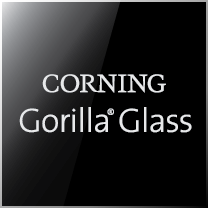Corning® ColdForm™ Technology for Automotive Interior Displays
Let’s face it — car shopping has changed. You conduct your own research and know exactly what you want before you test drive or purchase directly from a “vending machine.” Your tastes have evolved from simply needing an in-car radio or media player to truly wanting immersive displays that seamlessly replicate your experiences with your mobile devices. Guess what? You are causing a digital revolution for automakers. Where differentiating an automobile was once all about the exterior design, today’s automakers are now devoted to delighting you in the cabin with brand new possibilities for interior displays — how you interact with your car and the world around you.
Automakers are taking displays to the next level, from simple to interactive, small to large, low to high resolution, and – Corning’s favorite – flat to curved. Where analog instruments were once clustered behind the steering wheel, displays are now extending across dashboards in a variety of different shapes and sizes. While plastic can effectively cover these curves, only glass maintains the tactile feel, enhanced touch sensitivity, and beautiful aesthetics we’ve come to know and expect from our handheld devices. And only a flexible glass using patented Corning® ColdForm™ Technology can bring delicate curves to formerly flat infotainment systems in an economical way — making the digital revolution that much more affordable.
Hot Form vs. ColdForm™
It makes sense that shaped or curved pieces of glass traditionally are molded to hold their shape through a process called hot forming. Hot forming glass is like baking a cake in a ring-shaped pan – the batter is poured into the pan and baked; the product is a ring-shaped cake with designs and curves that the baker must maneuver while decorating.
Hot-formed glass poses similar challenges.
The glass is first molded in a bending furnace before going through the rest of the process. The ion-exchange tank for chemical strengthening must then accommodate shaped parts and, further down the line, coating and decoration applications must be calculated to uniformly coat the curves. It’s a less-than-precise process.
By comparison, AutoGrade™ Corning Gorilla Glass parts for 3D Interiors are so thin and tough that they can be fully manufactured flat and bent at room temperature using Corning’s ColdForm™ Technology. This means each part manufacturing process step – from fusion forming to chemical strengthening, from decoration to shipping – is all done with flat pieces of glass. This process preserves the glass’ pristine, fusion-formed surface, provides uniformly coated parts, and can produce higher yields through precision cutting.
ColdForm™ and Auto Interior Displays
AutoGrade™ Gorilla Glass for 3D applications can be concave or convex, dramatic or subtle. The same sheet can be bent multiple ways, providing design freedom and creativity from a c-shaped instrument cluster to an s-shaped center stack display.
Thin, tough AutoGradeTM Gorilla Glass makes the ordinary extraordinary, and serves as an essential ingredient for this digital revolution that is consuming automotive interior design.
Join us on our journey.
The future of driving awaits.
For OEMs exploring the promise of autonomous driving, Corning® Fusion5® Glass is the only windshield technology. Learn more by clicking the link below, or call at 607-974-1439.
